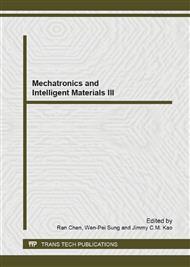[1]
Yonghong Li, Lili Du. Study on the Experiment and Measurement for Wireless-fuse Encountering High-speed Goal[J].Chinese Journal of Scientific Instrument, 25(4),(2004), p.221~223.
Google Scholar
[2]
Zhanzhong Cui, Shihe Song, Lixin Xu. Principle of Proximity Fuse [M].Beijing: Beijing Institute of Technology press, (2009), p.26~75.
Google Scholar
[3]
Zhongle Liu, Hanjun Zhang. The Simulation Method of the Torpedo Magnetic Fuse Introduction Signal [J]. Advanced Materials Research, 532, (2012), p.1308~1312.
DOI: 10.4028/www.scientific.net/amr.532-533.1308
Google Scholar
[4]
Xueping Zhang, Xiaoting Rui.Design and Simulation on Projectile-borne Storage Testing System Based on Embedded System[J].Journal of System Simulation, 21(1),(2009), p.84~87.
Google Scholar
[5]
Riheng Li, Shiyi Li. Design on In-shell Data Acquisition System of Exterior Trajectory Parameter for Trajectory Correction Fuse[J].Journal of Projectiles, Rockets, Missiles and Guidance, 26(5),(2004), p.56~58.
Google Scholar
[6]
Qun Dang, Xiaoli Lei. Doppler Frequency Shift Tolerance Extension in Burst Spread Spectrum Communication System [J]. Advanced Materials Research, 433, 2012, p.237~240.
DOI: 10.4028/www.scientific.net/amr.443-444.237
Google Scholar
[7]
Xinfeng Yu, Ming Gao. Restrictions Analysis of Shell-target Encounter Parameters for UWB Proximity Fuze Design[J]. Journal of Detection & Control, 30(10),2008, p.15~17
Google Scholar
[8]
Stone WR. Radar Cross Section of Complex Object [M]. New York: IEEE, (1990).
Google Scholar
[9]
Tie Li, Xue Qiang. Numerical Simulation of the Radar Signal Reflected for the Radio Proximity Fuze[J]. Introducing Journal of China Ordnance, 26(5),(2005), p.634~637
Google Scholar


